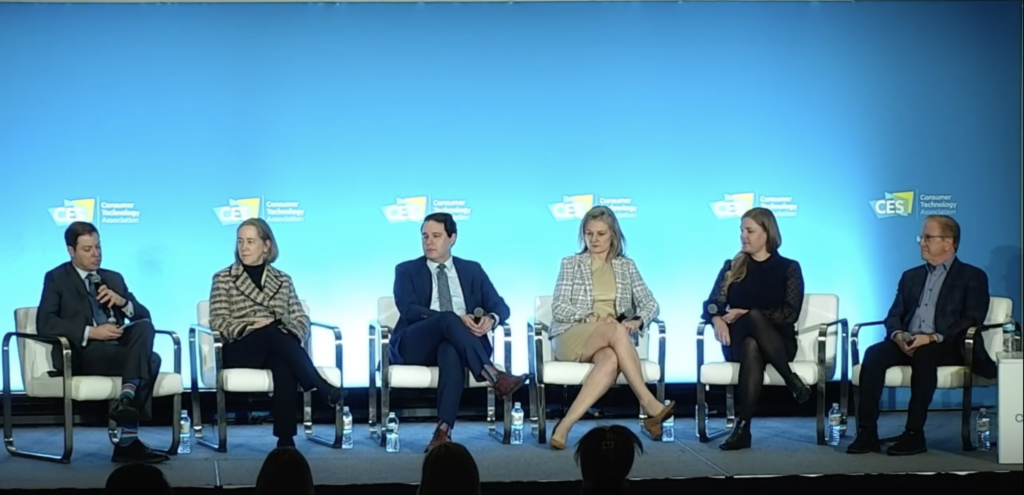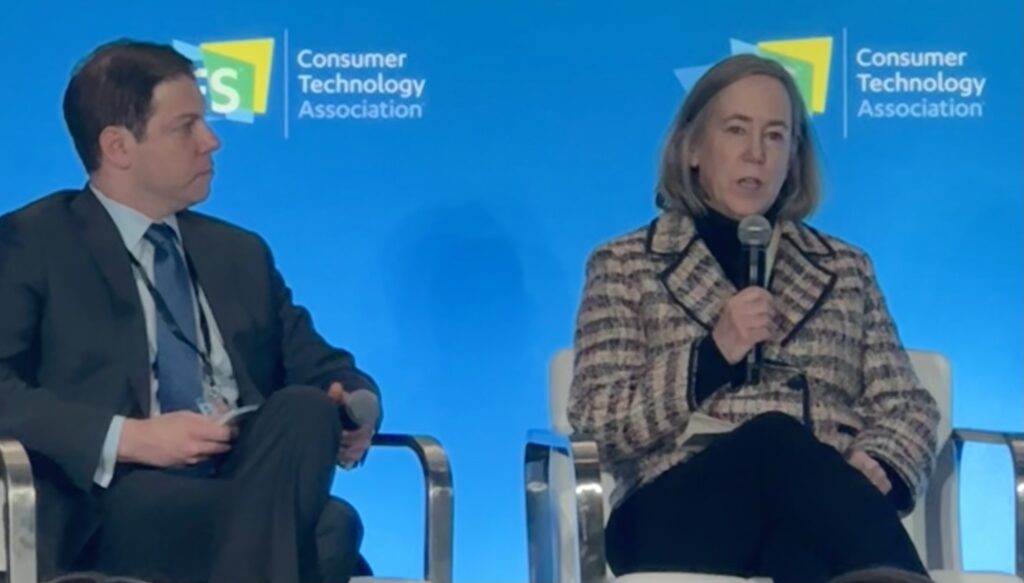Last week, WifiForward advisor Mary Brown participated in a panel discussion alongside fellow spectrum experts titled “Unlicensed Innovation: The Impact of Wi-Fi and Beyond in Daily Life” at the 2024 Consumer Electronics Show (CES) hosted by the Consumer Technology Association. The panel examined ongoing efforts to unlock faster Wi-Fi and how policymakers can continue to support unlicensed innovation. Here are key takeaways from the conversation:
Wi-Fi is critical for broadband delivery and innovation
“Wi-Fi sits at the edge of every single broadband connection you can imagine,” so it must be fast enough to transmit data from all your devices and cannot be a chokepoint. “Wi-Fi has to be not just good enough but future-proofed for tomorrow,” Brown added.
Phil Murphy, Senior Advisor at NTIA, explained that the Administration is thinking about how to make spectrum resources more useful to the commercial sector and also mentioned their role in deploying broadband through the Broadband Equity, Access and Deployment (BEAD) program. Murphy said, “Wi-Fi is an essential part of that process and closing that last mile.”
Kate O’Connor, Chief Counsel on the House Energy & Commerce Subcommittee on Communications and Technology, stated that unlicensed spectrum is important for in-home devices that operate solely over Wi-Fi, and that demand will only continue to grow. She also highlighted that unlicensed spectrum has a low barrier to entry and that you don’t need billions of dollars to innovate in the band.

Achieving global spectrum harmonization
Brown noted that there is no easy path to harmonization. Industry has to convince over 200 countries to agree on spectrum usage, and conversations have been ongoing since the FCC implemented 6 GHz in 2020.
There is some evidence that industry, and the U.S. government, has succeeded in its efforts to advocate for unlicensed use in the 6 GHz band. In spite of strong lobbying by the 5G vendor community to have countries declare 6425-7125 MHz for 5G, at the 2023 World Radiocommunication Conference (WRC), it was clear from the outcome that countries wanted to decide for themselves what they wish to do in the upper 6 GHz band, and not foreclose their options. “The world wants to keep an open mind and consider how unlicensed can benefit their broadband policies,” Brown explained.
Murphy noted that 6 GHz was a top priority of both the U.S. and Chinese governments heading into WRC. He agreed that many leading Wi-Fi companies are U.S.-based, and therefore it benefits the U.S. to lead the deployment of these new technologies. “Wi-Fi democratizes access to opportunity and information because it is permissionless,” he emphasized.
Jennifer Epperson, Chief Democratic Counsel for the House Energy & Commerce Subcommittee on Communications and Technology, added that the Committee has also thought about ensuring the government speaks with one voice on spectrum policy and recognizes NTIA as the spectrum manager for the federal government.
The next generation of Wi-Fi
Brown noted that until 2020, the unlicensed community hadn’t received a spectrum allocation since 2007. Today, thanks to the FCC’s decision to open 6 GHz, Wi-Fi is about to embark on an entirely new generation of technology with Wi-Fi 7.
Wi-Fi 7 will be more efficient, reliable, and secure with lower latencies, emphasized Brown. “It’s a tremendous change for Wi-Fi, but it requires 320 MHz wide channels to serve its large bandwidth applications,” she explained. Every prediction about Wi-Fi 7 is that this will be the fastest uptake of a Wi-Fi generation we’ve ever seen, she said.

Beyond the panel discussion, Wi-Fi and unlicensed technologies were the stars of the show across CES. Even FCC Commissioner Brendan Carr highlighted the importance of protecting unlicensed use in the upper 6 GHz band, explaining that it doesn’t make any sense to be “going backward on 6.”
But don’t just take our word for it: here are some of the innovative products showcased at CES:
- Amazon Experience Area, powered by eero Wi-Fi
- xFi Advanced Gateway by Comcast
- New AR/VR technologies, all of which run over Wi-Fi
- Qualcomm’s latest AI chip for virtual and mixed reality
